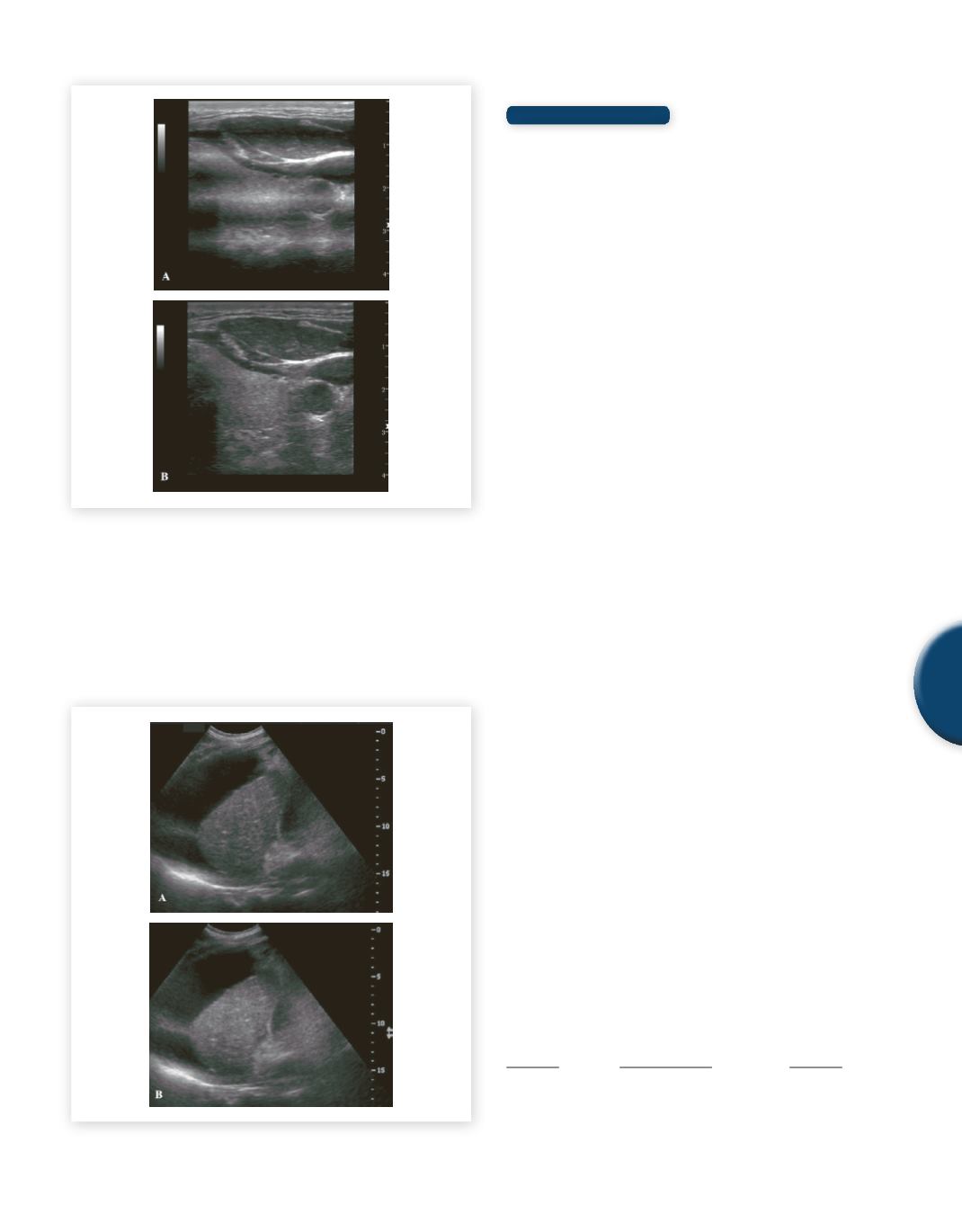
Chapter 6: System Operation
209
6
Fig. 100
These images are of a normal thyroid. Figure A is an
unadjusted image with many system parameters set incorrectly.
Figure B shows the auto corrected image.
Figure 101
shows the image of a cirrhotic liver optimized by hand
(A) and by an adaptive process (B). Notice that in Figure B the
reverberation artifact is reduced and the liver architecture is better
appreciated andmore uniform,especially in the far field.Also notice
that there is less artifact in all the regions of fluid.
Fig. 101
These images are of a cirrhotic liver with ascites.
Figure A was optimized by hand. Figure B was created by an
adaptive auto correction process.
29. Exercises and Conceptual Questions
Answers Pg. 558-560
1.
The _______________ determines the initial amplitude,
frequency and mode of ultrasound.
a) receiver
b) scan converter
c) recording device
d) pulser
2.
The receiver performs all of the following functions except
a) amplification.
b) data storage.
c) compensation.
d) compression.
e) demodulation.
f) rejection.
3.
Define each of the following terms
a) dynamic range
b) compression
c) reject
d) signal-to-noise
e) noise
f) signal
g) preprocessing
h) post processing
4.
Demodulation is a means of signal _______________ by
removing the initial transmit frequency from the returning
echo.
a) detection
b) compensation
c) augmentation
d) display
5.
A compression of 20 dB in amplitude means the range
of signals has been compressed or decreased by a factor of
_______________ .
6.
Give two possible compression algorithms for the following
situation.
4 Boxes
Compression
⇒
2 Boxes
Box 1:
2 small white marbles
Box 1: ________
Box 2:
2 large white marbles
Box 3:
2 small black marbles
Box 2: ________
Box 4:
2 large black marbles
SAMPLE PAGE


